Speaker
Description
TORCH is a large-area, high-precision time-of-flight (ToF) detector designed to provide charged-particle identification in the 2-20 GeV/c momentum range. Prompt Cherenkov photons emitted by charged hadrons as they traverse a 1cm quartz radiator are propagated to the periphery of the detector, where they are focused onto an array of microchannel plate photomultiplier tubes (MCP-PMTs). The position and arrival times of the photons are used to infer the particles’ time of entry in the radiator, to identify hadrons based on their ToF. The MCP-PMTs were developed with an industrial partner to satisfy the stringent requirements of the TORCH detector. The requirements include a finely segmented anode, excellent time resolution, and a long lifetime. Over a ~10m flight distance, the difference in ToF between a kaon and a pion with 10GeV/c momentum is 35ps, leading to a 10-15ps per track timing resolution requirement. The required single-photon time resolution is 70ps, for an average of 30 detected photons per hadron.
The TORCH R&D program aims to demonstrate the validity of the detector concept through laboratory and beam tests, results from which will be shown. A timing resolution of 70-100ps was reached in beam tests, approaching the TORCH design goal. Laboratory timing tests consist of operating the MCP-PMTs coupled to the readout electronics. A time resolution of the MCP-PMT coupled to the readout electronics of ~50ps was measured. This meets the TORCH target timing resolution.
| Primary experiment | TORCH |
|---|
